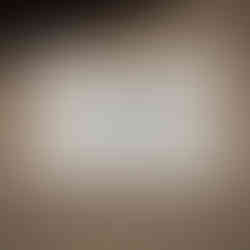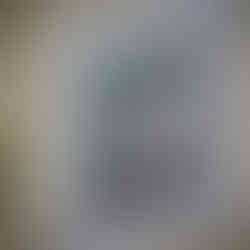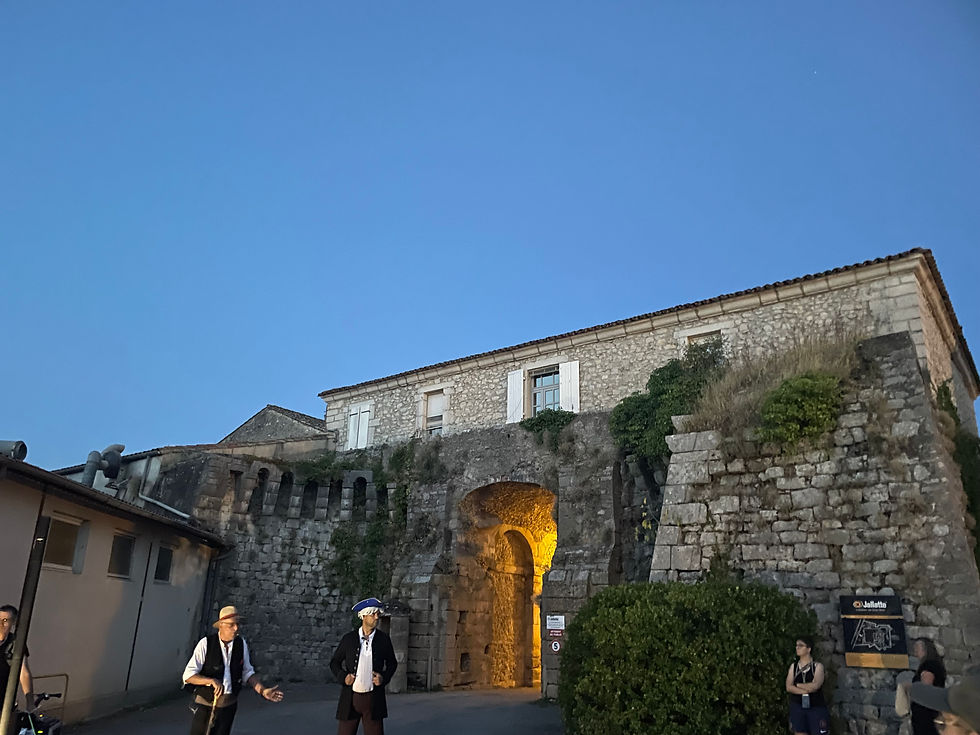So Many Sundials
- JanetJoanouWeiner

- Jul 9, 2022
- 4 min read
Our little town is uniquely blessed with not one or two, but 21 sundials. Perched here and there on various homes and buildings, they add a lovely element to the flavor of St. Hippolyte du Fort.

This ceramic sundial is on the cottage wing of the Château de Planque, where I live. The inscription says: "Happiness in Paradise." While everything here is not perfect, it is truly beautiful and we are grateful for the joy of living in this place.
The cicada motif is everywhere in St. Hippolyte because they are SO LOUD when it's hot. Just kidding. People from St. Hippo are called "Cigalois" which is French for "cicada people." As you can imagine, there is a story behind this. Check out my blog post "Les Cigalois de St Hippolyte" from January 21 if you're interested in how this came to be. I Iove the cicada serenade; for me it's the soundtrack of warm fragrant summer days and nights.
Around the corner, we find this pretty sundial. It's painted on the front of one of my favorite houses, and nestled among a climbing vine. Charming!

Why all the sundials here? Once upon a time, there were two sundial-makers who were passionate about having them placed around town. They encouraged individuals and various groups to have sundials made and displayed. In addition to the 21 that are visible, there are another 29 in private gardens and homes.
I could be cynical and say this was a shrewd business move on their part. But apparently it takes six trades to create a sundial: art designer, technician for the calculations, engraver, mold-maker, ceramicist, and a sundial maker. So, I think their idea brought a welcome amount of work all around. And those of us who live here today get to enjoy these fascinatingly diverse art and time pieces.

High on the Catholic church at the center of town, we find this dial which says "At the hour of God." They even worked in a cicada image which I'd never noticed until I posted this photo.
Time is...well...an elusive yet concretely practical concept. We live by the hourly rhythms that flow into days, weeks, months, and years. Sometimes time flies by and we find ourselves saying "I can't believe it's already July" or "I can't believe I'm ___ years old" (haha, true for me!) In other seasons, time seems to pass slow and long and we ask are we there yet?
Yet we know time a constant and is unchanging in duration. In any case, we can't escape it. Until eternity! No clocks there.
As you can see, there were quite a variety of styles and materials used.
On the left, we have engraved stone. It's the smallest one in town and sweetly says: "It is always the time for friends."
On our right, paint on wood shows different trades: clockmaker, florist, electrician, baker, mechanic, pastry chef, pharmacist, etc. Again, I wish I knew the story behind this choice.
Both sundials here say "Time Flies." And yes, as mentioned above, it truly does––most of the time (!)
Have you ever noticed how much the word "time" is incorporated into our common everyday speech?
A bit more color adorns these sundials. Again, I'm struck by how unique they are; no two are the same.
The motto on the left here says: "Passerby, may this hour be the best for you." What a kind thought.
In the middle, we have practical advice: "Take advantage of the moment. Time passes so quickly!"
The one on the right gives us the French version of "Seize the Day."
These two dials, which you can see on their respective houses, have images of the zodiac.
And here we have...suns! A little on the nose, but lovely none the less.
These are two of my favorites. The one indicating the year 1739 may be the oldest, dating before the French Revolution. We find it on a lovely little terrace in the center of town and it reminds us "Time is passing, pass it well."
The one on the right overlooks the central market area. The motto: "Passing by, pursue your route, the clock is ticking." Sounds a bit ominous to me.

Mounted on a pillar of local stone, this sundial is the only one not affixed to a building. It is an equatorial sundial, and unlike the horizontal versions, has two sides. In summer, when the sun is above the celestial equator, it casts a shadow on one side of the dial plate, and in winter, when the sun is below the equator, it casts a shadow on the other side. Interesting!
Phew! We made it to the last three. If you count, you'll find I'm missing one. I'll let you know when I find it!
Again, the variety strikes me. From the red clay dial representing the coat of arms of the city, to the more modern plaque on the right showing a garland of wisteria. In the middle, we have a simple dial, over 100 years old, and painted directly onto the building. You can't see the motto here, but it says: "Like the flowers, the hours pass."
A little sad, I think, but true.
I'll finish with the wise words of King Solomon on the subject of time. While a bit stark, these truths also bring comfort in their reality.
"There is a time for everything, and a season for every activity under the heavens:
a time to be born and a time to die, a time to plant and a time to uproot, a time to kill and a time to heal, a time to tear down and a time to build, a time to weep and a time to laugh, a time to mourn and a time to dance, a time to scatter stones and a time to gather them, a time to embrace and a time to refrain from embracing, a time to search and a time to give up, a time to keep and a time to throw away, a time to tear and a time to mend, a time to be silent and a time to speak, a time to love and a time to hate, a time for war and a time for peace."
Ecclesiastes 3: 1- 8
La vie est belle...


















































Enjoyed learning about sundials -appreciate them even more especially since these required 6 different trades. And these are beautiful. Amazing the culture this place has!
Merci, for the tour of the sundials!
Some of these are so beautiful!